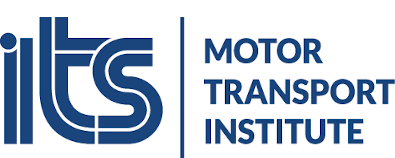CITA Highlights Safety in a Changing Vehicle Landscape
On 10 June 2025, CITA hosted an exclusive high-level conference under the patronage of the Polish Presidency of the Council of the European Union. Themed “The Roadworthiness Package and the Challenge of Coping with Vehicle Technology,” the event brought together EU policymakers, technical experts, and automotive industry leaders to address how PTI can remain relevant in an era of rapid technological transformation.
Held in Brussels, the conference emphasized the urgent need to adapt regulatory frameworks and inspection methods to ensure continued vehicle safety and environmental compliance, especially with the proliferation of electric vehicles, advanced driver assistance systems (ADAS), and complex on-board electronics.
Opening Remarks
The conference opened with a compelling speech by Gerhard Müller, President of CITA, who underlined the critical role of PTI in guaranteeing road safety amid the growing digitalization and automation of vehicles. He highlighted the shared responsibility of institutions, manufacturers, and inspection bodies in maintaining vehicle compliance throughout its life cycle.
Stanisław Bukowiec, Deputy Minister of Infrastructure of Poland, reaffirmed Poland’s commitment to advancing road safety in Europe and praised the cooperation between national governments and international organizations such as CITA.
Expert Presentations
The technical session began with four in-depth presentations:
PTI in Poland – Dr. Łukasz Mórawski (ITS)
Dr. Mórawski presented a comprehensive overview of the Polish PTI framework, covering inspection procedures, vehicle inspector qualifications, the role of CEPiK (Poland’s vehicle and driver registry), and digital tools like mObywatel 2.0. He emphasized the decentralized yet rigorously supervised nature of Polish inspections, highlighting ongoing efforts to enhance transparency and data integration.
Challenges of Individual Used Vehicle Imports – Tobiasz Mościcki (ITS)
Mr. Mościcki examined the difficulties faced during the registration of used vehicles imported from other EU countries due to inconsistent documentation and classification. He advocated for harmonized EU standards and legal clarity for vehicle inspectors, underlining the gap between the ambitions of the Roadworthiness Package and practical realities.
IT Solutions for PTI Centers – Aleksander Ćwiszewski (UNIMETAL Sp. z o.o.)
Mr. Ćwiszewski showcased advanced digital tools that streamline operations at PTI centers. His presentation featured integrated inspection systems, data encryption protocols, automated calibration tools, and iSKP—a Polish IT platform ensuring seamless data exchange with governmental systems like CEPiK. These innovations promise increased efficiency, transparency, and legal compliance.
The Inspection of ADAS Systems – Olivier Pletinckx (CITA)
Mr. Pletinckx introduced the current work of the CITA ADAS Task Force, presenting multiple technical concepts for assessing ADAS performance during PTI without needing direct access to vehicle ECUs. Concepts ranged from static inspection methods (GTÜ, DEKRA) to dynamic scenario-based approaches (FSD, KÜS, MAHA, DÜRR-KOTSA). Each model was assessed on feasibility, cost, test time, and integration potential—emphasizing the need for standardization and statistical validation.
An engaging debate session followed, with participation from representatives of the Association of Automotive Parts Distributors and Producers (SDCM). The discussion centered on legislative harmonization, data access, and future-proofing PTI methods.
CITA President Gerhard Müller concluded the event by reiterating the need for coordinated EU action to ensure that vehicle inspections evolve alongside technology. He expressed appreciation for the Polish Presidency’s support and encouraged further research and cooperation across borders.








